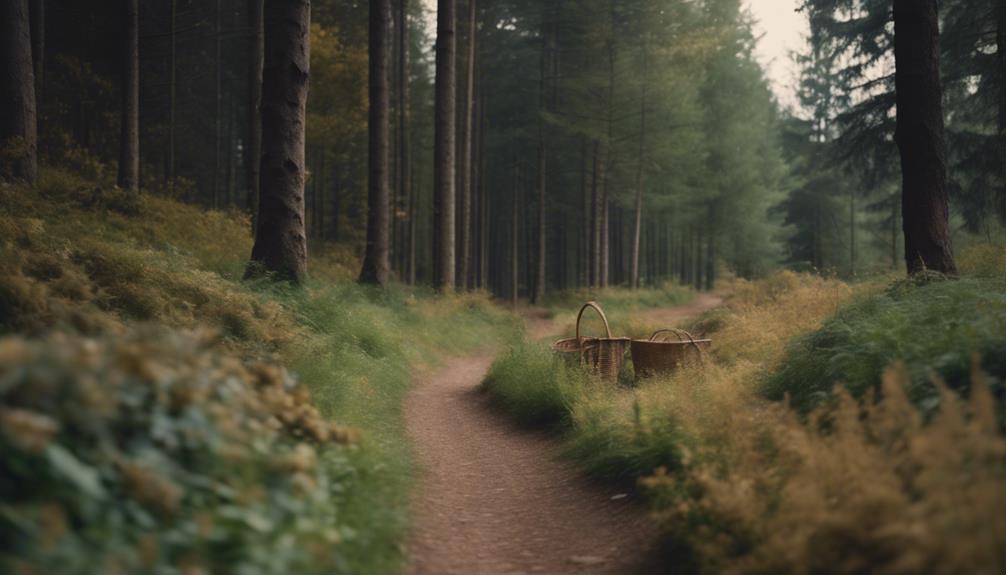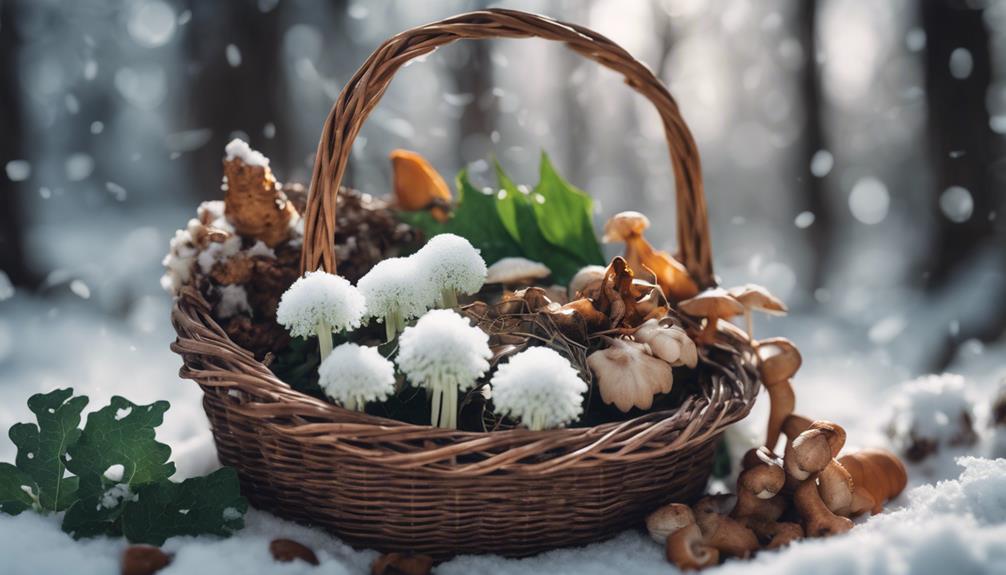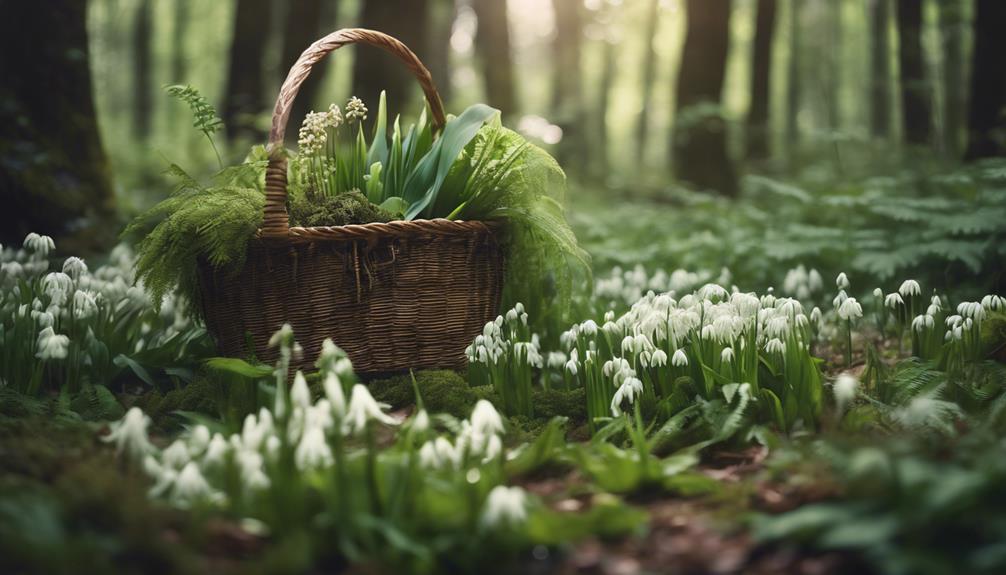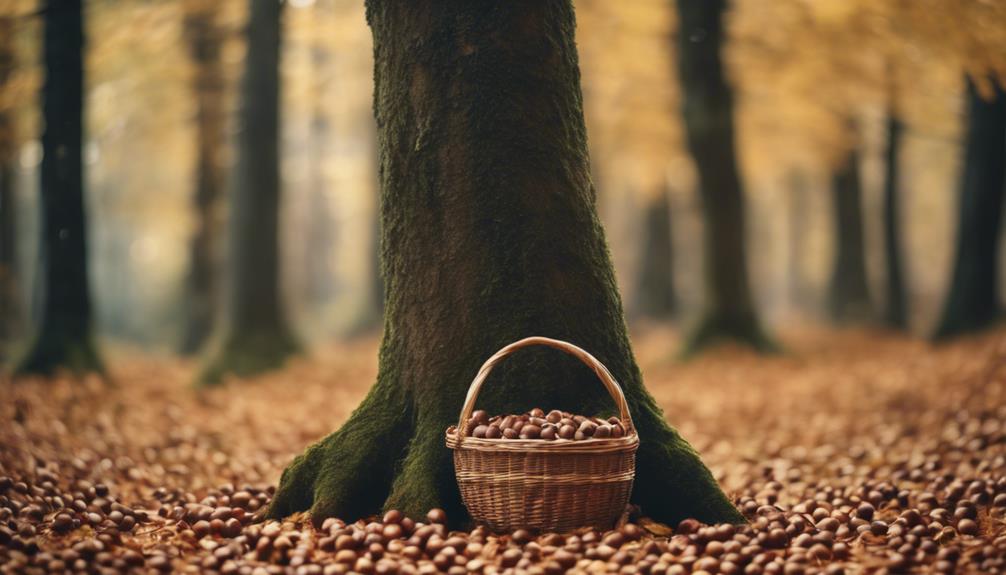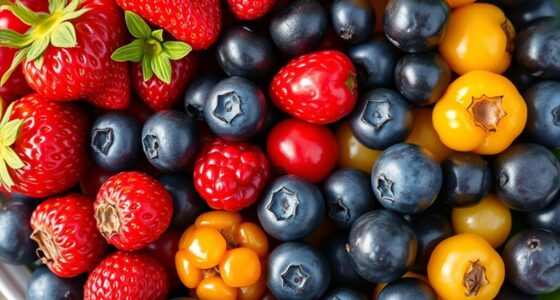When foraging for wild edibles, it is imperative to understand that Crown land regulations vary by province and territory, and failure to comply can lead to fines or legal consequences. You'll need to obtain necessary permits and permissions before foraging on Crown land, and respect Indigenous rights and territories. Private land foraging requires landowner permission. Accurate plant identification is vital, and you should harvest only what you need, avoiding over-harvesting and respecting the environment. By understanding the legal framework and regulations, you can forage safely and sustainably. Continue to explore the world of Crown land foraging to gain more essential knowledge.
Key Takeaways
- Crown land regulations vary by province/territory, and failure to comply can lead to fines/legal consequences.
- Obtain necessary permits before foraging on Crown land, and respect Indigenous rights and territories.
- Foraging on private land requires landowner permission, and always prioritize environmental sustainability.
- Ensure accurate plant identification to avoid consuming toxic plants, and follow guidelines for responsible harvesting.
- Understand local regulations and best practices to enjoy guilt-free foraging on Crown land.
Understanding Crown Land Regulations
When venturing into Crown land for foraging, knowing the regulations is essential, as the rules vary across provinces and territories, and failure to comply can result in fines or legal consequences.
You're enthusiastic to harvest wild foods, but it's important to understand that Crown land is owned by the government and managed for the benefit of the public. Before you start foraging, get to know the local regulations, as they differ across regions. Remember, harvesting on private land requires permission from the landowner.
When foraging on Crown land, you must ask for permission and follow the specific guidelines. Ignoring these rules can lead to fines or legal troubles. It's crucial to respect Indigenous rights and territories when considering foraging on Crown land. Don't assume that Crown land is open to foraging; instead, take the time to understand the regulations and obtain the necessary permits.
Safe and Sustainable Foraging Practices

You can now take your foraging skills to the next level by adopting safe and sustainable practices on Crown land, ensuring that you not only find the best wild edibles but also preserve the environment for future generations. Essential foraging is key, and that means harvesting only what you need, avoiding over-harvesting, and respecting the environment.
This is especially important in national parks and protected areas, where unique ecosystems require extra care. When foraging for wild mushrooms, proper plant identification is crucial to avoid mistakenly picking toxic species. Additionally, be aware of contaminated areas and follow guidelines for responsible harvesting.
Seasonal foraging and proper preparation of wild foods are also essential for safe and sustainable practices on Crown land. By understanding the legal framework and regulations, you can ensure compliance and environmental stewardship. Remember, adopting safe and sustainable foraging practices is a critical step in preserving the natural beauty of Crown land for future generations.
Identifying Edible Plants Accurately

Accurately identifying edible plants on Crown land is an important skill that requires attention to detail, as misidentification can have serious consequences.
When you're out on a foraging adventure, it's vital to know what you're harvesting wild. Take wild garlic, for instance. It's a popular find, but you need to be sure you're not mistaking it for a lookalike.
Proper plant identification is necessary for safe foraging on Crown land. To get it right, utilize field guides, online resources, and expert advice.
Look for key characteristics such as leaf shape, color, and growth patterns to distinguish edible plants. Understanding plant families and seasonal changes can also aid in identifying edible species.
Don't rush the process – misidentification can lead to consuming toxic plants. Take the time to learn about accurate plant identification, and you'll be able to enjoy your foraging adventures with confidence.
Environmental Considerations and Safety

As you venture into the world of foraging on Crown land, it's equally important to take into account the environmental impact of your actions and prioritize safety protocols to guarantee a sustainable and healthy foraging experience.
When engaging in wild plant gathering, it's imperative to adopt ethical practices that minimize environmental harm. Over-harvesting can lead to biodiversity loss and habitat degradation, so it's important to harvest responsibly.
Climate change effects can alter the availability and distribution of wild foods, affecting your foraging practices. To guarantee a safe and sustainable experience, tend to plant regeneration, avoid polluted areas, and prioritize proper identification to avoid consuming toxic or poisonous plants.
Foraging in safe areas away from contamination is crucial to ensure the safety of harvested wild foods. By adopting these environmentally conscious practices, you can enjoy a guilt-free foraging experience on Crown land.
Responsible Harvesting and Handling

How do you guarantee that your foraging endeavors on Crown land aren't only sustainable but also compliant with regulations? To be sure, you'll need to obtain the necessary permits and permissions before you start foraging.
Know that responsible harvesting on Crown land involves more than just knowing what to pick; it's also about when to pick it. Be mindful of the time of year and only harvest what's in season to avoid overexploitation of wild food resources.
Keep in mind that proper handling of harvested wild foods is essential to maintain freshness and prevent contamination. By following guidelines for responsible harvesting and handling, you'll be helping to protect natural ecosystems and wildlife habitats.
Take the time to educate yourself on local regulations and best practices for foraging on Crown land. This won't only ensure that you're compliant with regulations, but it will also help you become a more sustainable and responsible forager.
Frequently Asked Questions
In What States Is Foraging Illegal?
You'll find that foraging is illegal in some states, like New Hampshire, where it's considered trespassing, and in California, where you'll need a permit to forage on state park land, or face fines. However, other states may have more lenient regulations or offer designated areas for foraging, particularly in national forests or public lands. Foraging in California, despite requiring a permit on state park land, can still be enjoyed legally through responsible and informed practices. It’s essential to research local laws and guidelines to avoid potential penalties and protect natural ecosystems during your foraging adventures.
What Is the Rule of Thumb for Foraging?
You're wondering what the rule of thumb for foraging is? Investigate the 4Rs: Respect the land, Research the area, Reach out to locals, and Refrain from over-harvesting to guarantee sustainable and responsible foraging practices.
How Do Beginners Do Forage?
You start foraging by researching local regulations, obtaining necessary permits, and learning to identify edible plants accurately; then, you can join foraging groups or workshops to gain valuable knowledge and guidance.
What Are the 9 Rules to Follow When Finding Edible Plants?
As you venture into the wild, you're on the hunt for edible treasures, but first, you must know the 9 essential rules: research thoroughly, inspect carefully, and only pick what's abundant, avoiding lookalikes and unripe fruits, to guarantee a safe and bountiful harvest.
Conclusion
As you venture into the world of foraging on crown land, remember that responsible practices are key.
Just as a skilled chef must balance flavors, so too must you balance your desire to forage with the need to preserve the environment.
One misstep can be like a domino effect, causing a ripple of damage to the ecosystem.
By following guidelines and exercising caution, you can savor the fruits of your labor while preserving the land for future generations.

